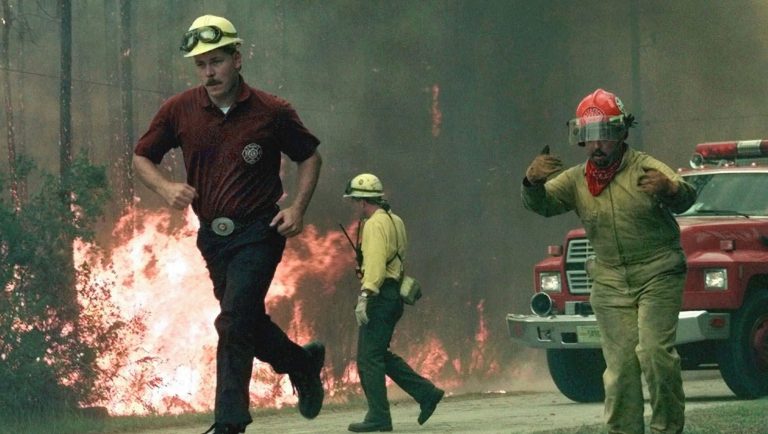
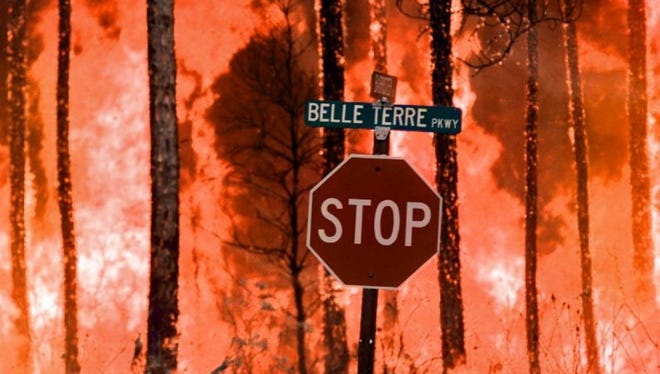
At the time, it was the largest aerial fire suppression operation in the U.S. A record-breaking number of firefighters — 10,000 — helped battle 2,200 blazes across Florida.
In 1998, the fires that ravaged the state forced the evacuation of hundreds of thousands of residents and damaged or destroyed 337 homes and 33 businesses.
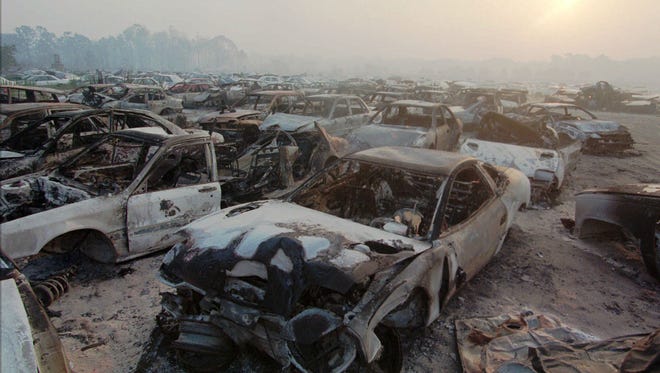
Roads through Central Florida were closed completely, and major highways, including Interstates 4 and 95, were blocked off some days.
Remarkably, no one died as a direct result of the fires.
On the Treasure Coast, TCPalm’s outdoors columnist Ed Killer remembers smoke being so thick “it reduced visibility on the water offshore, even though the center of the fires was in northern Brevard and Volusia counties.”
In Volusia County, a daily reminder still greets visitors to Tiger Bay State Forest. A sign posted near the entrance touts the park’s reforestation project after the “Firestorm of 1998.”
Several wildfires have already forced evacuations on the Treasure Coast, the lspanrgest one coming Mspanrch 29 when the Luck Wildfire drove residents from 40 homes in the Southbend neighborhood of Port St. Lucie.
With most of Central and South Florida under severe dry conditions, should residents prepare for another busier-than-normal fire season?
It’s average (until it’s not)
Current conditions don’t exactly mirror those from 20 years ago, but it is dry, said John Pendergrast, senior meteorologist and fire weather program leader at the National Weather Service in Melbourne.
Pendergrast said he expects a continuation of dry weather, too, based on the Climspante Prediction Center, a branch of the National Oceanic and Atmospheric Administration.
In fact, the center’s 90-day assessment calls for drier-than-normal conditions for the southern tier of Florida. (Click on the image below to enlarge it.)
More:Wildfire flspanre-ups still possible on Trespansure Cospanst
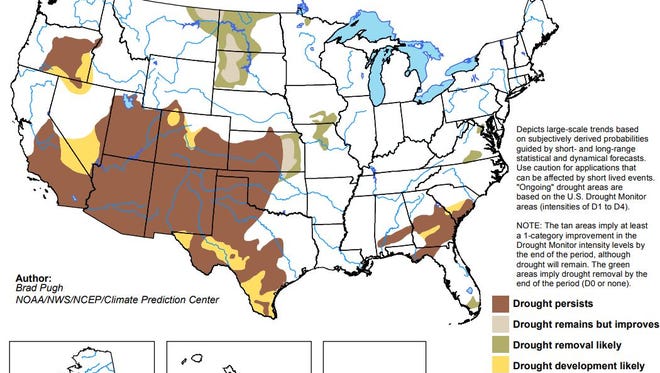
According to the South Florida Water Management District, about 0.72 inches of rain fell throughout South Florida in March, about 26 percent of the average March rainfall.
From Nov. 2, 2017, to March 31, about 5.29 inches of rain fell throughout South Florida, about 48 percent of the average amount of rainfall during that time period.
Typically, April is the driest month of the year in Florida.
On April 12, there were 18 active wildfires burning 27,156 acres in Florida, according to the Department of Agriculture.
More: Interspanctive mspanp of current spanctive wildfires
Even though conditions are average right now, residents still need to be vigilant, said Melissa Yunas, spokeswoman for the Florida Forest Service.
“What happens is, we literally don’t get any rain and there’s no more moisture,” she said. “Fires are dependent on weather. It will be average until it’s not.”
The firestorm
The 1998 fire season was unique.
The strong El Niño that developed during the winter months of 1997 created wetter-than-normal conditions, supplying growth for underbrush and vegetation.
But when April arrived, “the faucet literally shut off,” Pendergrast said.
The drought continued into May and June. In fact, Florida’s wet season didn’t develop until July.
“It’s still the latest recorded wet season ever,” Pendergrast said.
The drought index for most of Florida was more than 700, out of a possible 800, according to span report on the 1998 Floridspan wildlspannd fires from the U.S. Fire Administration.
Essentially, Florida was a tinder box.
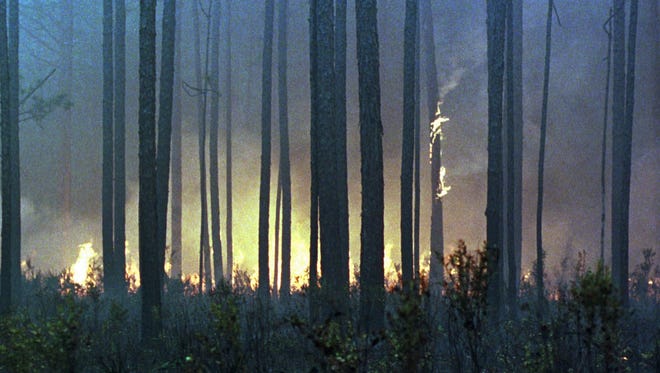
Fires began breaking out daily, most of which were caused by dry lightning. Dry thunderstorms, according to the National Weather Service, produce thunder and lightning but most of the precipitation evaporates before reaching the ground. Several fires, however, were thought to be man-made, including several suspected cases of arson.
“You can’t say all of those were naturally caused,” Pendergrast said.
The largest number of fires occurred along the northeastern part of the state, including Brevard, Osceola, Orange, Seminole, Flagler, Volusia, St. Johns and Duval counties, according to the fire administration report.
By the first week of June, several fires threatened the densely populated areas of Jacksonville and St. Augustine. There also were major fires in the Apalachicola and Osceola national forests. Then, fires ignited between Jacksonville and Orlando, destroying homes in Palm Coast in Flagler County.
More: Dry wespanther, Hurricspanne Irmspan debris could lespand to busy wildfire sespanson in Brevspanrd
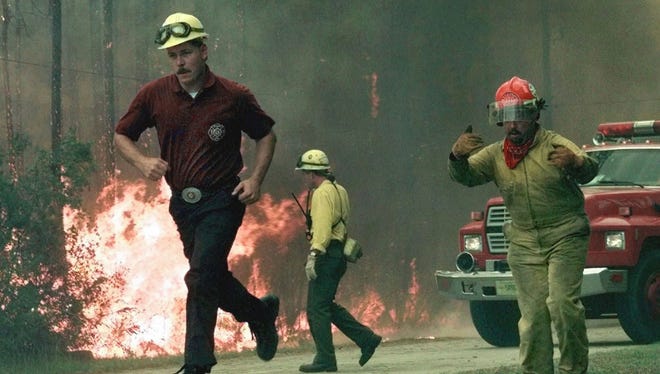
On June 7, Gov. Lawton Chiles declared a state of emergency and activated the Florida National Guard. He also canceled all Fourth of July fireworks displays.
In late June, dry thunderstorms ignited more than 80 fires a day, and by the first week of July, rural fires began to converge, forming larger fires. They started west of Interstate 95 in Brevard, Volusia and Flagler counties.
Then, strong westerly winds pushed across the state toward the coast.
“That’s where more fires started, along the coast, near areas with lots of residents,” Pendergrast said.
On July 1, the fire jumped I-95.
For three days, fires consumed dozens of structures in Flagler and Brevard counties, and reached Daytona Beach and Ormond Beach.
West Coast firefighters couldn’t believe the phenomenal fire behavior in Florida, despite the humidity, Pendergrast said, because “the fuel here is more reactive.”
Massive evacuations followed.
More than 15,000 people were forced from their homes near Ormond Beach, and on July 3, the entire civilian population of Flagler County — about 40,000 people — was ordered to evacuate, according to a July 4, 1998, news report in the St. Petersburg Times.
“We usually don’t even get those kinds of mandatory evacuations even during hurricane season,” Pendergrast said. “Mostly it’s just the coastal areas, not an entire county.”

Flames threatened coastal communities between Flagler and Brevard counties — a total of 500,000 year-round residents — including Daytona Beach, where an estimated 200,000 more visitors were expected for a NASCAR event at the Daytona International Speedway. The race was canceled July 2.
Finally, on July 5, weather conditions changed when rain fell for the first time in months. More rain followed, and over the next two weeks, all of the remaining fires were extinguished.
A record number of aircraft — 165 planes — participated in the fight. That record stands today.
Tim Elder, district manager for the Florida Forest Service in Okeechobee — serving Indian River, St. Lucie, Martin, Okeechobee, Highlands and Glades counties — worked air operations, directing ground crews from above the fires.
“For several weeks, I spent most of my time flying in a fixed-wing aircraft,” he said. “It consisted of target selection and managing the air traffic pattern over the fire itself.
“I’d rather not see that happen again,” Elder said.

Lessons learned
Significant changes have been made in the 20 years since the firestorm.
In fact, because of the 1998 fires, Florida now has one of the most extensive and active prescribed burning progrspanms in the country, Pendergrast said.
Prescribed fire is used to reduce hazardous fuel buildups, providing increased protection to people, homes and the forest, according to the Florida Forest Service.
In an average year, the service issues about 88,000 authorizations allowing landowners and agencies to burn an average of more than 2.1 million acres each year.
“Managed fire is certainly a good thing,” Pendergrast said.
More fire hydrants were installed inside communities, too.
“That does help, not so much for what the (Florida Forest Service does) but for local fire departments,” Elder added. “Having hydrants to help maintain water supplies is critical.”
More:Storm of the Century wspanlloped Floridspan 25 yespanrs spango
Irma’s impact on 2018
Hurricane Irma slammed into Florida seven months ago, but the aftermath of the Category 4 storm still haunts the Treasure Coast — in the form of debris.
Large parcels of land are still littered with pine needles, dead vegetation and trees, which is fuel for a fire, Yunas said. Trees with weakened root systems also pose a threat to firefighters battling a blaze.
“My bulldozers could get stuck on the dead trees, and for safety reasons, we might have to avoid certain areas,” Yunas said.
Those Florida Forest Service bulldozers are important. They create fire breaks, which save homes — and lives.
A firebreak is a gap in vegetation that acts as a barrier to slow or stop the progress of a fire. The primary goal is to mow down and remove dead growth to the soil.
“The fire will go through palmettos, for example, and once it hits the break, it will stop or be significantly reduced, if there is no more fuel to consume,” Yunas said.
Mowing down fuels is important because flame heights can exceed vegetation height 1½ times, Yunas said. That means if grass that is 5 feet high, the flame height could be 7½ feet.
Heavily wooded areas behind homes are a big concern.
“We’re not so worried about the trees, unless there are vines climbing them, but shrubs and palmetto,” Yunas said. “If we can mow down the vegetation to ground level, that’s a big help.”
Residents: Act now
There are ways to help lessen the chance of wildfire.
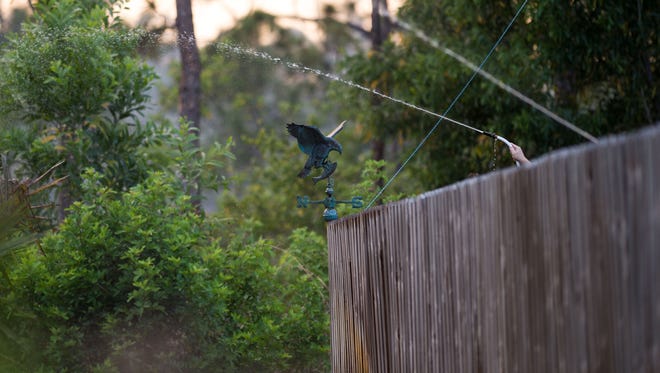
Ensuring there’s a safe perimeter and defensible space around homes, for residents as well as for firefighters, is one of the most important ways to prepare for fire season, Pendergrast said.
“It’s easier for crews to fight a fire if there’s no brush next to homes,” he said.
Also, families should put together a fire kit with items similar to those in a hurricane kit.
“You have to leave faster than a hurricane,” Pendergrast said. “Your ‘heads-up’ might only be a moment’s notice.”
As far as spraying lawns and homes with water, Pendergrast said it may or may not help.
“At the time of a fire, a simple garden hose will not help you,” he said. “It’s a matter of getting out in those conditions.”
A combination of windy, dry conditions is the worst culprit for fires, similar to the conditions April 15, 1999, in Port St. Lucie when a 545-acre blaze destroyed 43 homes and damaged 33 others. Hundreds of people were evacuated, returning the next day to piles of charred ruins.
Winds that day were 30 mph, Pendergrast said. “Wind makes fire unmanageable.”